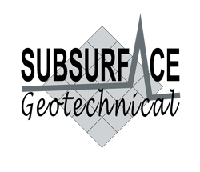
Electromagnetic EM 31 survey on a restored brownfield site


Electromagnetic EM 31 survey on a restored brownfield site
Electromagnetic surveys have been one of our firm's specialist geophysical methods for many years. EM conductivity surveys measure ground conductivity by the process of electromagnetic induction. The principal electromagnetic systems used for site investigation are the Geonics EM 31, EM 34-3 and EM 38 ground conductivity meters. The systems work on similar principles consisting of a transmitter and receiver coil spaced at a fixed configuration, but use different operating frequencies to provide a range of depth penetration and resolution for different applications.
Low frequency EM 34-3 systems can be effective for finding large underground cavities such as caves and mine workings but are rarely applicable for smaller targets. The EM 31 operates at an intermediate frequency and is useful for locating discrete features such as sinkholes, abandoned mineshafts and underground storage tanks UST's. The high frequency EM 38 system is best for detecting small targets buried at shallow depth, such as chemical waste drums and metal artifacts.

Investigating abandoned mineshafts using the EM31
During normal survey operations the EM system is suspended above ground to avoid direct contact. This operational mode makes EM surveys rapid and cost effective in comparison to conventional resistivity surveys. A primary electromagnetic field output by the transmitting coil induces a secondary field in the ground. The receiving coil measures the magnitude of the secondary field (quadrature component) and the ratio between primary and secondary fields (in-phase component). Quadrature fields are proportional to ground conductivity, being responsive to bulk changes in lithology, groundwater and ground contamination. The presence of metal produces strong secondary fields, making the in-phase component a useful indicator of the presence of buried metal objects
EM data is typically collected as point readings of ground conductivity or in-phase taken at regular intervals along a survey grid that has been set out over the site area. The spacing of the grid-lines and reading stations is dependent upon the target size. Generally smaller targets require closer survey lines and denser spaced readings.

Searching for buried metal artefacts with the EM 38
The site data is recorded on a digital data logger for later downloading to a PC for post-survey processing and interpretation. The most commonly used interpretation procedure is contouring, carried out with specialist interactive software to produce contour plans. The contoured data is analysed in detail by our experts to identify anomalous features relative to the general background. Once identified, the anomalies are correlated with local ground conditions. Survey results are presented as plans tied in to site co-ordinates, in a readily understandable engineering CAD format.

Identifying a concealed landfill on a ground conductivity contour plan
Finding voids & solution features in soil and rock
Locating abandoned mineshafts, crown holes & subsidence features
Identifying bedrock discontinuities & mineralised veining
Defining former landfill sites & associated leachate plumes
Detecting buried UST's & dumped chemical waste drums
Mapping soil types and land drainage systems
Phone us at: +44-1905-619531 or e-mail us at: [email protected]